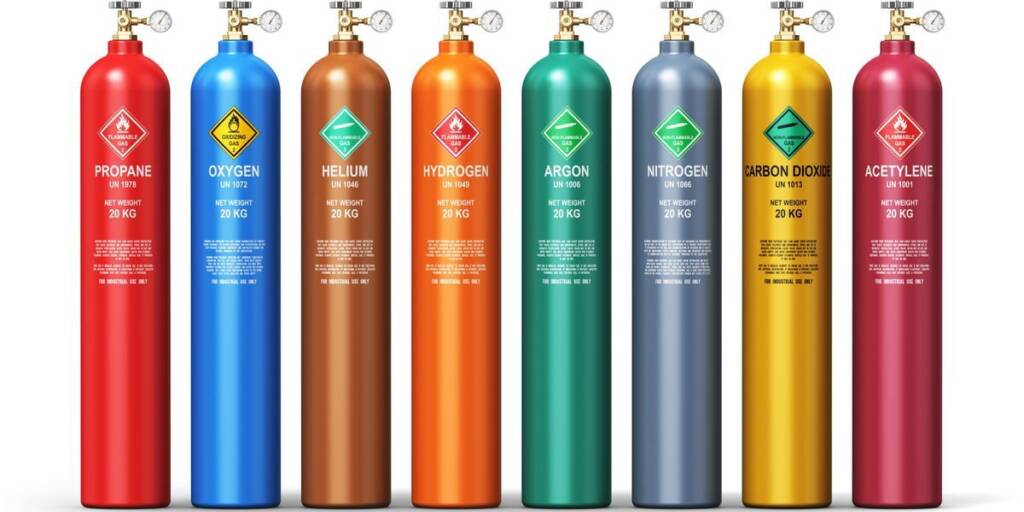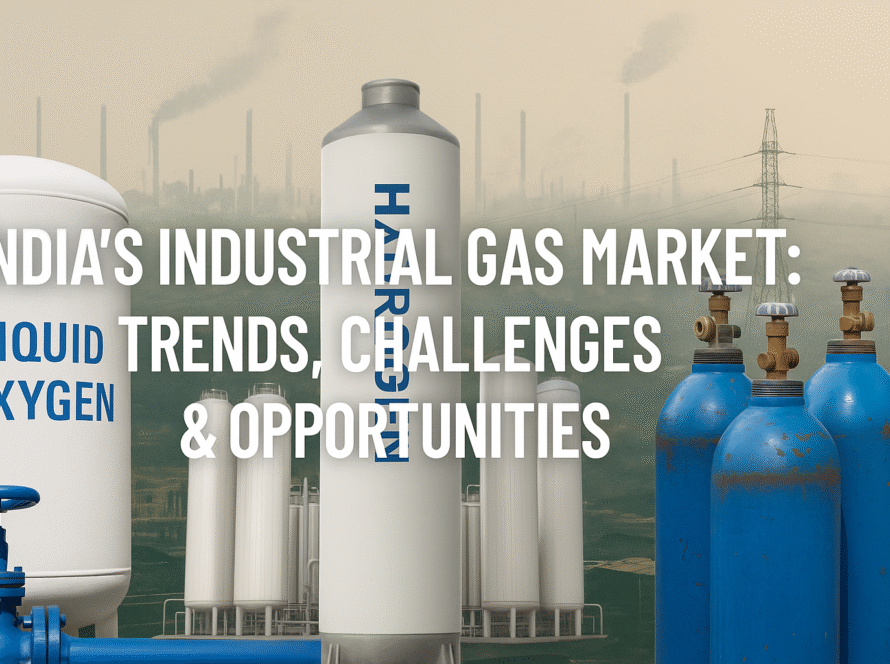
Rethinking Supply Chains: How Industrial Gases Power Modern Industry
From medical oxygen to high-purity nitrogen and hydrogen, industrial gases are the invisible force behind countless operations. But before they reach your factory floor or fill hospital cylinders, they undergo a complex, carefully controlled journey. In this blog, we trace the lifecycle of industrial gases—from their production in state-of-the-art plants to their distribution through pipelines and cylinders—to understand their value, versatility, and strategic role in India’s growing industrial economy.
Gas Plants: The Birthplace of Precision
Industrial gases are produced using a variety of methods depending on type, purity, and enduse. For example:
• Cryogenic Air Separation Units (ASUs) are used to separate oxygen, nitrogen, and argon from atmospheric air.
• Steam Methane Reforming (SMR) is widely used to produce hydrogen.
• Electrolysis is now gaining traction as a cleaner way to produce green hydrogen.
These plants are built with high safety, accuracy, and automation to ensure gas purity meets industrial, medical, or research standards.
Purification & Storage: Maintaining Quality at Scale
Once gases are generated, they undergo purification and quality checks before being stored.
✔ Purification techniques: pressure swing adsorption (PSA), membrane separation, catalytic converters.
✔ Storage systems: high-pressure cylinders, cryogenic tanks (for liquid gases), and specialized vessels to maintain purity, safety, and stability.
For instance, calibration gases must maintain exact ppm levels, while medical oxygen must meet strict pharmacopeial standards.
Transporting Industrial Gases: From Safety to Speed
Gases are transported in different forms and containers based on volume and end-use location:
• Pipelines: Ideal for supplying large quantities directly to industrial clusters.
• Cryogenic Tankers: For long-distance transportation of liquefied gases like oxygen and nitrogen.
• High-Pressure Cylinders: Widely used in hospitals, labs, and manufacturing units.
Companies must comply with stringent safety norms, like PESO regulations in India, to avoid leaks, combustion, or contamination.
Final Delivery: Customization at the Last Mile
Industrial gases are not one-size-fits-all. At the final stage, gases are:
Blended: for specific mixtures (e.g., welding gas blends, calibration gases)
Repackaged: based on user needs—small cylinders for labs, bulk supplies for steel plants
Tracked and Monitored: using IoT-based telemetry for refill alerts and usage data
These last-mile services ensure seamless supply continuity, especially for time-sensitive operations like hospitals or semiconductor fabs.
Use Cases Across Industries
Manufacturing: Cutting, welding, heat treatment (oxygen, acetylene, argon)
Pharma & Labs: Ultra-high purity gases for research and diagnostics
Automotive: Nitrogen for tires, hydrogen for fuel cells
Healthcare: Medical oxygen, nitrous oxide for anesthesia
Environment & Waste: Specialty gases for emission monitoring and analysis
Challenges in the Supply Chain
Even with sophisticated systems, challenges persist:
⚠ Storage Risks: Especially with flammable or cryogenic gases
🛣 Logistics Delays: Road transport of gases faces route restrictions and compliance hurdles
Regulatory Burdens: Frequent changes in PESO and pollution board certifications
Demand Volatility: Sudden spikes in sectors like healthcare (e.g., COVID-19) can strain systems
Innovations to Watch
To address these challenges, the industry is adopting:
Telemetry-Enabled Smart Cylinders
Green Hydrogen Production via Solar Electrolysis
Modular On-Site Gas Generation Units
Blockchain for Supply Chain Transparency
Global Practices India Can Learn From
Germany: Smart gas grids and real-time telemetry in industrial parks
Japan: Hydrogen pipelines and storage integration with renewable energy
USA: Advanced liquefaction and LNG-to-industrial gas conversions
Sweden: Focus on biogas and gas-powered fleets in manufacturing
Policy Recommendations for India
Ease PESO Norms for MSMEs: Simplify licensing for small-scale gas users
Offer Subsidies for On-Site Generation: Reduce dependency on centralized plants
Develop Industrial Gas Clusters: Co-locate plants near steel, pharma, or electronics hubs
Promote Green Gas Adoption: Incentivize low-carbon hydrogen and biogas integration
Conclusion: More Than Just a Gas—A Growth Enabler
From powering furnaces to purifying semiconductors, industrial gases are critical enablers of modern industry. As India advances toward green growth and industrial self-reliance, building a resilient, safe, and scalable industrial gas ecosystem—from plant to pipeline—will be key.
References:
• Ministry of Petroleum & Natural Gas
• Indian Gas Association
• PESO Guidelines 2024 • IEA Reports on Industrial Gases
• Industry reports from Linde, Air Liquide, INOX Air Products




